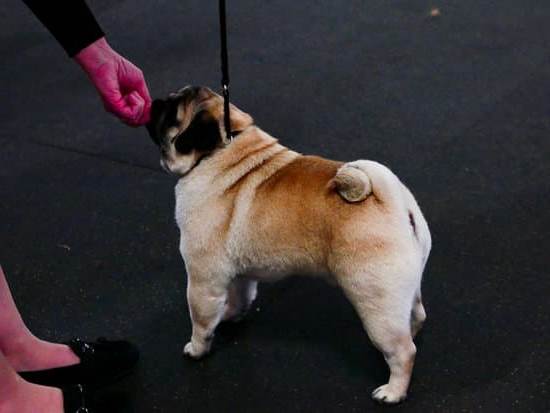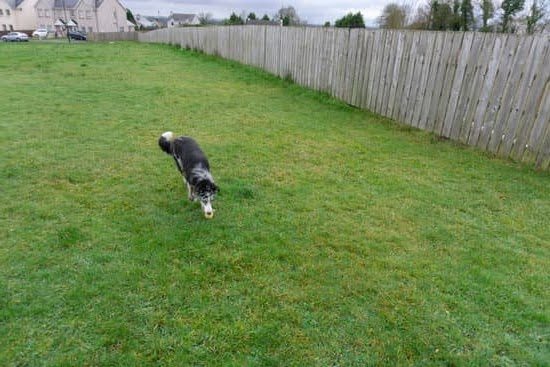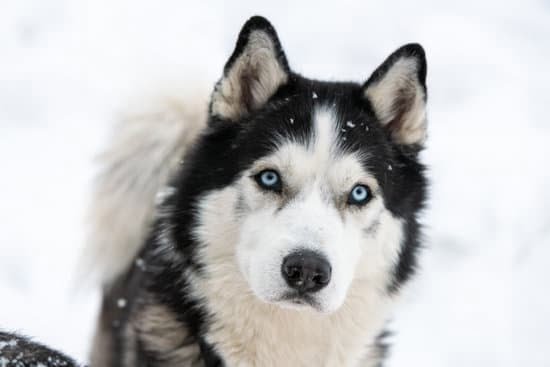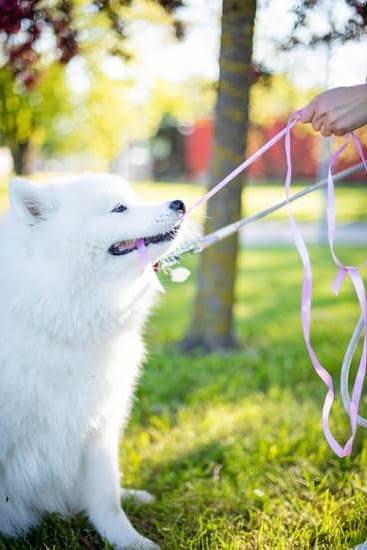What age do you start potty training dogs? Potty training is an essential aspect of raising a well-behaved and house-trained dog.
It is important to understand the significance of potty training for dogs in order to provide them with the guidance they need to develop good bathroom habits. From recognizing the signs that your dog is ready for potty training to understanding the best age to start, there are many factors to consider when embarking on this journey with your furry companion.
Potty training is more than just teaching your dog where to go potty; it’s about establishing a routine and fostering good habits that will benefit both you and your pet in the long run. By understanding the importance of potty training for dogs, you can set realistic expectations and approach the process with patience and positivity.
It’s crucial to recognize when your dog is ready for potty training in order to kickstart the process effectively. Additionally, knowing the best age to start potty training plays a significant role in determining your dog’s readiness and ability to learn. With the right information and guidance, you can navigate through this essential aspect of pet ownership successfully.
Signs That Your Dog Is Ready for Potty Training
Recognizing Signs of Readiness
Before you start potty training your dog, it’s important to look for signs that they are ready for the training process. Some common signs that indicate your dog is ready for potty training include frequent sniffing around the house, circling in a specific spot, or suddenly disappearing from sight before having an accident indoors.
Understanding Your Dog’s Bladder Control
Another important aspect to consider when determining if your dog is ready for potty training is their bladder control. Puppies typically have less bladder control compared to adult dogs and may need more frequent bathroom breaks. Understanding your dog’s breed and age can also help you gauge their readiness for potty training.
Establishing a Routine
Once you have identified the signs that your dog is ready for potty training, it’s important to establish a routine. Dogs thrive on consistency, so setting designated times for bathroom breaks can help reinforce good potty habits. This routine will also help your dog understand where and when they should go to the bathroom, making the training process more effective.
The Best Age to Start Potty Training Dogs
When it comes to potty training your furry friend, the question of “what age do you start potty training dogs” is a common one. The best age to start potty training your dog is when they are still puppies.
Puppies have a natural instinct to keep their sleeping and eating areas clean, making them more receptive to potty training at a young age. However, it’s important to note that the ideal age for potty training can vary depending on the breed and individual characteristics of the dog.
Factors to Consider When Determining the Best Age for Potty Training
When deciding the best age to start potty training your dog, there are several factors to take into consideration. These include:
– Breed: Different dog breeds may mature at different rates, so it’s important to take this into account when determining the best age for potty training.
– Developmental stage: Just like humans, dogs go through different developmental stages. It’s important to wait until your puppy has enough control over their bladder and bowel movements before starting potty training.
– Individual characteristics: Each dog is unique, so it’s essential to consider your dog’s specific personality and behavior when determining the best age for potty training.
Tips for Successful Potty Training
Regardless of the age at which you start potty training your dog, success largely depends on using effective methods and techniques. Some tips for successful potty training include:
1. Using positive reinforcement: Rewarding your dog with treats or praise when they exhibit good potty behavior can go a long way in reinforcing positive habits.
2. Establishing a routine: Setting up a consistent schedule for feeding, walking, and bathroom breaks can help your dog develop good potty habits.
3. Being patient and consistent: Potty training takes time and patience, so it’s important to be consistent in your approach while maintaining a calm and understanding attitude towards any accidents or mistakes.
By taking these factors into consideration and using these tips for successful potty training, you can set your dog up for success in learning good bathroom habits from an early age.
Potty Training Methods and Techniques
When it comes to potty training your dog, there are several methods and techniques that you can use to make the process as smooth and effective as possible. One of the most popular methods is crate training, which involves using a crate to confine your dog when you are unable to supervise them.
This teaches them to hold their bladder and wait until they are taken outside. Another method is using positive reinforcement, where you reward your dog with treats and praise when they eliminate in the designated potty area.
In addition to these methods, there are also techniques that you can incorporate into your potty training routine. One technique is establishing a designated potty area for your dog, whether it’s a specific spot in your yard or a pee pad indoors.
By consistently taking your dog to this area, they will learn where it’s appropriate to eliminate. Another technique is using verbal cues or commands when it’s time for your dog to go potty, which can help them understand what is expected of them.
It’s important to remember that every dog is different, so you may need to try out different methods and techniques to see what works best for your furry friend. Additionally, patience and consistency are key when it comes to potty training, so be prepared to dedicate time and effort into this process in order to achieve success.
| Potty Training Methods | Potty Training Techniques |
|---|---|
| Crate training | Establishing a designated potty area |
| Positive reinforcement | Using verbal cues or commands |
Setting Up a Potty Training Schedule for Your Dog
When it comes to potty training your dog, having a consistent schedule is key to success. Just like humans, dogs thrive on routine, and knowing when they should go outside to do their business helps them understand what is expected of them. Here are some tips for setting up a potty training schedule for your dog:
1. Determine the best times for potty breaks: Take note of your dog’s usual bathroom habits and try to establish a schedule around those times. Typically, dogs need to go outside first thing in the morning, after meals, after playtime, and before bedtime.
2. Use cues to signal potty time: Using simple commands or cues can help your dog understand when it’s time to go outside. This could be as simple as saying “outside” or ringing a bell by the door. Pairing these cues with actual potty breaks will help reinforce the behavior.
3. Be patient and consistent: It’s important to stick to the schedule you’ve set for your dog. Consistency is key in reinforcing good potty habits, so try not to deviate from the established routine. Remember that accidents may happen, especially in the beginning, but staying patient and consistent will help your dog understand what is expected of them.
By establishing a clear potty training schedule for your dog and sticking to it consistently, you will be well on your way to successfully potty training your furry friend.
Dealing With Accidents and Mistakes
Accidents and mistakes are an inevitable part of the potty training process for dogs. It’s important to remember that your dog is still learning, and it’s natural for them to have slip-ups along the way. How you handle these accidents can have a big impact on your dog’s progress in potty training.
When accidents happen, it’s important to remain calm and avoid punishing your dog. Punishment can create fear and anxiety around the act of eliminating, making it harder for them to learn where they should go. Instead, clean up the mess thoroughly to remove any lingering odors that might attract your dog back to the same spot. Using an enzymatic cleaner specifically designed for pet accidents can help eliminate odors effectively.
It’s also important to reevaluate your potty training routine if accidents become frequent. Make sure you are taking your dog outside often enough and that they understand where they should be going. If accidents continue to happen frequently despite your efforts, consider consulting a professional trainer or behaviorist for additional guidance.
One thing that can help prevent accidents is closely supervising your dog when they are indoors, especially during the early stages of potty training. This allows you to intervene quickly if you notice any signs that they need to eliminate, such as circling or sniffing around.
| Common Potty Training Challenges | How to Overcome Them |
|---|---|
| Frequent accidents | Reevaluate potty training routine; consult a professional if needed |
| Punishing the dog for accidents | Avoid punishment; use positive reinforcement instead |
| Inadequate supervision indoors | Closely supervise the dog indoors; intervene at signs of needing to eliminate |
Consistency Is Key
Establishing a Routine
Consistency is key when it comes to potty training your dog. This means establishing a routine and sticking to it. Dogs thrive on routine, so creating a consistent schedule for potty breaks will help them understand where and when they are supposed to go to the bathroom.
It’s important to take your dog outside for potty breaks at the same times every day. This includes first thing in the morning, after meals, before bedtime, and any time they have been crated or confined for an extended period of time. By following a regular schedule, you can help your dog learn when and where they should go potty.
Using Positive Reinforcement
In order to maintain a potty training routine, it’s essential to use positive reinforcement. When your dog goes to the bathroom outside, be sure to praise them and offer treats as a reward. This will help reinforce the behavior and encourage them to continue going potty in the designated area.
On the other hand, if accidents happen indoors, it’s important not to scold or punish your dog. Instead, simply clean up the mess without drawing attention to it. Punishing your dog for accidents can lead to fear and anxiety, making potty training even more challenging.
Adapting as Needed
While maintaining consistency is important, it’s also essential to be flexible and adapt as needed. Pay attention to your dog’s signals and behavior – if you notice any changes or if they are struggling with the routine, make adjustments accordingly. Additionally, be patient and understanding as every dog is different and may require different approaches when it comes to maintaining a potty training routine.
Celebrating Potty Training Success With Your Dog
Potty training a dog is no small feat, and once your furry friend has mastered the art of doing their business outside, it’s time to celebrate their success. Celebrating potty training success with your dog is not only a way to show them how proud you are, but also reinforces positive behavior.
One simple way to celebrate your dog’s potty training success is by giving them plenty of praise and treats every time they go outside to do their business. Positive reinforcement is key in any type of dog training, including potty training. By showering your dog with praise and treats, you are reinforcing the idea that going outside is the right thing to do.
Taking your dog for a special walk or play session as a reward for successful potty training can also be a great way to celebrate. Not only does this give your dog an opportunity for some extra exercise and fun, but it also shows them that good behavior leads to enjoyable activities. Additionally, spending quality time with your dog can strengthen the bond between you and your furry companion.
In addition to praise, treats, and special outings, consider getting a small gift or toy for your dog to mark their potty training success. This doesn’t have to be anything expensive or extravagant – even a new chew toy or a fun new ball can serve as a token of celebration for your pup’s achievement.
Remember that celebrating your dog’s potty training success is not just about rewarding them; it’s also about showing them how much you appreciate their efforts in learning this important skill.
Common Potty Training Challenges and How to Overcome Them
In conclusion, potty training is an essential part of raising a well-behaved and house-trained dog. Understanding the signs that your dog is ready for potty training, as well as the best age to begin this process, is crucial in ensuring success. Consistency in your approach, along with patience and positive reinforcement, will help you overcome common potty training challenges.
It’s important to remember that every dog is different, and some may take longer to grasp the concept of potty training than others. However, with the right methods and techniques, coupled with a consistent schedule and routine, you can effectively potty train your furry companion.
Furthermore, it’s normal for accidents and mistakes to occur during the potty training process. Instead of becoming frustrated or discouraged, it’s important to remain patient and continue providing guidance for your dog. Remember that potty training takes time and dedication but celebrating each success will ultimately lead to a well-behaved and house-trained dog.
So when asking yourself what age do you start potty training dogs? Remember that with the right knowledge and approach, you can successfully navigate through this challenge and set your furry friend up for success.
Frequently Asked Questions
What Age Should a Dog Be Potty Trained?
Dogs can typically start potty training as early as 12 to 16 weeks old, although some breeds may take longer to grasp the concept. It’s important to be patient and consistent with training.
Can an 8 Week Old Puppy Be Potty Trained?
Yes, 8-week-old puppies can be potty trained, but it requires patience and consistency. At this age, puppies have small bladders and may need to go outside frequently, so it’s crucial to stick to a schedule.
How Long Does It Take for a Puppy to Be Potty Trained?
The time it takes to potty train a puppy varies depending on the dog’s breed, age, and individual temperament. On average, it can take anywhere from a few weeks to several months for a puppy to fully grasp potty training. Consistency and positive reinforcement are key in the process.

Welcome to the blog! I am a professional dog trainer and have been working with dogs for many years. In this blog, I will be discussing various topics related to dog training, including tips, tricks, and advice. I hope you find this information helpful and informative. Thanks for reading!





